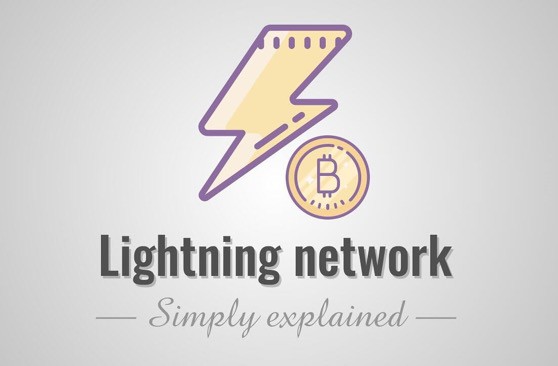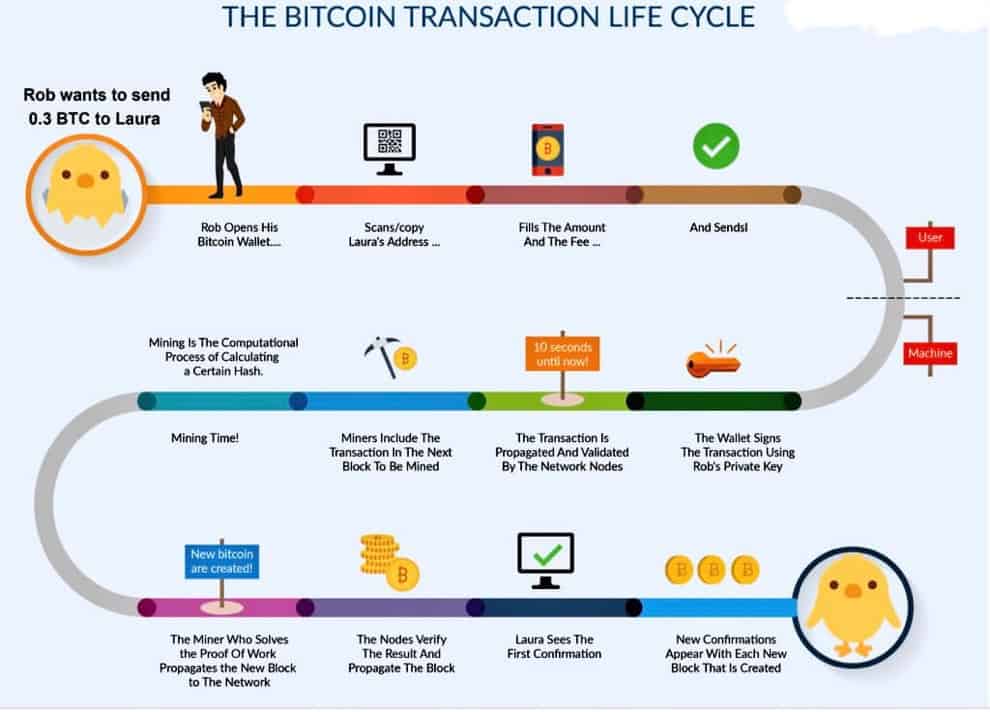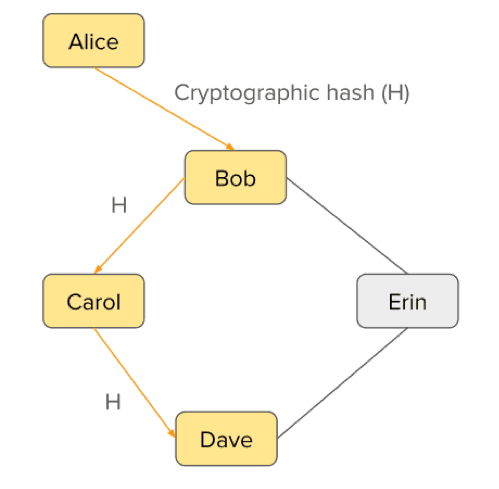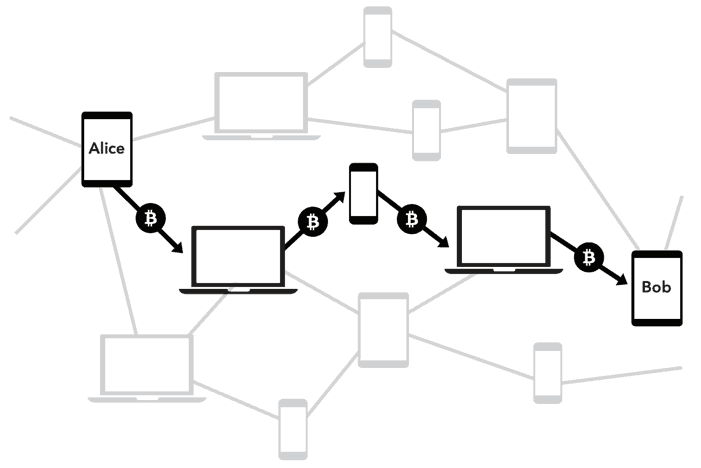Bitcoin Lightning Network Explained [Simply]

Would you believe me when I say:
Now you can make near-instant payments with Bitcoin.
Looks like a dream?
But it isn’t !!
The old Bitcoin that we knew with the capability of doing 7-10 transactions per second is now scaling to be able to do thousands of transactions per second.
Plus, Bitcoin transactions are becoming much cheaper and faster so that you don’t need to wait as well as pay more than the cost of a coffee itself in Bitcoin transaction fees !!
You are wondering, how that’s happening?
Well, a technology called Lightning Network for blockchain based cryptocurrencies is making it possible and the good news is, Bitcoin is using it.
In this guide, we are going deep dive into Bitcoin’s Lightning Network and also see a glimpse of the future technologies which will make Bitcoin scale.
So without a further addon, let’s get in:
What Is Lightning Network Bitcoin?
The lightning network is a second layer protocol designed especially for scaling the payments capacity of blockchain based cryptocurrencies like Bitcoin.
The original idea of lightning appeared in 2016 and in 2017 the development of Bitcoin lightning protocol started pioneered by Blockstream and Lightning Labs.
Since then Lightning for Bitcoin has attracted a fair share of appreciation as well as criticism from the market, but so far the development continues abated.
The lightning network went live on the Bitcoin’s mainnet on 15th March 2018.
After countless late nights, lines of code, bug fixes, and memes…
We finally released Lightning for bitcoin mainnet!!! ⚡️⚡️⚡️https://t.co/EsyXWpxIUY
— elizabeth stark 🍠 (@starkness) March 15, 2018
Why We Need Bitcoin Lightning Network?
We need the lightning protocol for blockchain based cryptocurrencies because blockchains are inherently slow.
Or instead, I should say, decentralized and distributed public blockchains like Bitcoin are slow which only can do few transactions per second that too at a slow speed.
For example, Bitcoin’s blockchain can only do 7-10 transactions per second and for a particular transaction to get six confirmations you need to atleast wait for 60 minutes.
Also, in times of high congestion on Bitcoin’s blockchain, the transaction fees can go way beyond acceptable, and you might require to pay more than the price of coffee itself in fees while transacting through Bitcoin’s blockchain.
Of course, no one wants to wait too long or pay so much for exchanging any goods or services; that’s why we need something which is near instant and cheap mode of transaction.
At the same time, we want that it should do the job without compromising the censorship resistance and decentralization of the blockchain.
That’s where Bitcoin lightning network comes in and fills in for the shortcomings of the base layer of Bitcoin, i.e., blockchain.
Lighting does so by broadcasting only those transactions to the base layer which are utmost necessary while keeping the non-necessary transactions off-chain.
That’s why it is able to increase the throughput of the base layer while ensuring that though Bitcoin scripting the decentralized and uncensored characteristic of the base layer is emulated in the lightning layer also.
And if at all, someone is trying to game the transactions on the lightning layer then the underlying base layer is available which always acts as unbiased arbitrator thus resolving the conflict.
This makes zero-confirmation Bitcoin transactions possible.
Lastly, lightning transactions take negligible power for computation, and that’s why you have meager fees for transactions possible via Bitcoin lightning network.
That’s why we need the lightning network !!
How Bitcoin Lightning Network Works?
Before diving into how Bitcoin lightning network works, you need to understand how a Bitcoin transaction happens on the Bitcoin’s blockchain?
- First, to do a transaction on Bitcoin’s blockchain, you go an type the number of bitcoins you need to transfer and then set a Bitcoin transactions fees of it.
- Second, when you click send, your wallet signs the transactions with the respective Bitcoin private key and broadcasts this transaction to the network.
- Thirdly, your transaction remains unconfirmed in a Bitcoin mempool until the nodes validate its and a miner picks that transaction in a block.
However, the miner can decide not to pick your transaction from the mempool, if your transaction fee is too less. That’s why it is recommended to attach appropriate fees for quick confirmations.
But no matter how much fees you attach, you need to wait atleast 60 minutes for 6 confirmations, and that is just too much time.
That’s where Bitcoin Lightning Network comes to rescue.
Bitcoin lightning transactions work differently as the basic idea behind it is that the blockchain doesn’t need to know about every transaction, untill necessary.
In the lightning network, the two parties who wish to transact with each frequently (daily, weekly or monthly) can set up payment channels.
Payment channels are essentially 2-of-2 multisig wallets which enables a shared ledger to exist just between the parties involved. Also, this payment channel needs to be funded by atleast one of the two parties involved, and this funding transaction happens on-chain. (More detailed article introducing Bitcoin Payment Channels is awaited !!)
After this on-chain transaction is complete, many transactions can happen between the two parties involved in the payment channel. But here the spending only happens when both the parties sign thus updating the shared ledger between them.
Also, note that this shared ledger and its entries are off-chain and not broadcast until the parties involved want to close the payment channel.
So with payment channels, you can reduce the number of transactions that would have happened between the two parties to effectively two transactions, i.e., while opening the channel and closing the channel.
Sounds still confusing?
Well then let’s understand it with two simple examples:
Direct Payment Channels (Example 1)
Let’s assume we have two lightning participants Alice & Bob who often need to transact with each other.
- Alice & Bob opens up a payment channel by transferring $10 worth of bitcoins to the payment channel. These transactions are happening on-chain, and blockchain only sees a $20 ledger entry.
- Now, Alice is transferring 1$ every day to Bob for some service, and this continues until 5 days. These transactions are off-chain and are just ledger entries with signatures of both the parties.
- After 5 days their ledger entry looks like this, Alice’s balance is $5, and Bob’s balance is $15. Now they have decided to close the channel and thus broadcast the latest state of the channel to the blockchain.
- The blockchain now gets the status in the form of latest ledger entry in the channel, and it transfers $5 to Alice and $15 to Bob.
In this case, the underlying blockchain acts as a fair jury by looking at the latest ledger entry that was already signed and agreed between the two parties.
But this scenario was simple as there are only two parties involved but what if Alice wants to transact with more parties?
In that case, opening channels with each party Alice wants to transact is not that smart way !!
That’s why in such cases Alice can use the network of payment channels to transact with other parties provided they are on the lightning network.
Let’s see this other example.
Routed Payment Channels (Example 2)
Alice wants to transact with Dave but doesn’t have a direct open channel with him.
We have this lightning channel map which shows that Alice has an open channel with Bob, who has a channel open with Carol and Carol has an open channel with Dave.
But now since Alice is connected indirectly to Dave through Bob and Carol, they will act as intermediaries between Alice & Dave.
Similarly, Alice can transact with anyone around the world with one open channel which is in turn connected to multiple other channels.
Now, I know that you must be thinking when Bitcoin will be using the lightning network?
When Is lightning network coming to bitcoin?
Well, lighting is already with Bitcoin.
The Beta version of lightning went live on the Bitcoin network in March 2018, and since then it is ever growing in its ability and capacity.
But another reality of Bitcoin’s lightning network is that it will never have sort of date for its deployment completion. That’s because lightning is an iterative change and it will rolling out as more people adopt it by opening Bitcoin lightning nodes.
Jameson Lopp has also pointed this out in early 2018 that this is not a definitive change and it will be growing organically as more users adopt.
Q: When will the Lightning Network be rolled out?
A: The rollout has already begun. This is an iterative distributed learning process; it's unlikely there will be a single point in time at which we say LN is "deployed" because it will grow organically. Software is never finished.— Jameson Lopp (@lopp) January 1, 2018
Is lightning network working?
Now, I know the next question that would be in your mind is, is it working?
And the answer is resounding, YES.
Lightning network for Bitcoin is working in full swing.
In the past year alone, the number of lightning nodes has crossed 2800 with more than 20,000 open channels and a capacity of more than $2 million.
And currently, as we speak the number of nodes has crossed 6000 nodes and with 30,000+ channels supporting the capacity of $2.7 million.
#LightningNetwork https://t.co/Q0CaYRhLWD observed:
6,963 nodes (3,686 with active channels)
31,656 channels
740.377 BTC capacity ($2,835,497.17)new in the past 24h:
47 nodes, 750 channels
median node capacity: 0.016 BTC ($62.62)#Lightning #LN #bitcoin $BTC— Lightning Network statistics ⚡ (@LNstats) March 4, 2019
Though the current lightning network status looks great, there are mountains to climb because there are many engineering problems to resolve.
But the good news is, many problems are already resolved, and solutions for them are being discussed for implementation.
So in the next section, we will discuss some of the Bitcoin lightning network technologies that are on the roadmap.
Bitcoin lightning network roadmap
Unlike many other currencies, Bitcoin doesn’t have a timeline based roadmap for its development, and the same thing is with Bitcoin lightning network roadmap.
This is precisely because Bitcoin is pioneering unprecedented innovations which haven’t been tried before and that’s why extreme caution needs to be taken.
Some of the lightning technologies that are under continuous development are listed below:
- Dual-Funded Channels
- Submarine Swaps
- Splicing
- Compact Client-Side Block Filtering
- Watchtowers
- Atomic Multi-Path Payments
- Channel Factories
Expect a future blog post on each of the pieces of technologies in further detail but for now, understand one thing:
The lightning network is not only limited to Bitcoin; instead, it can be adopted by any other blockchain based cryptocurrency too, and that’s what is happening in the cryptosphere !!
Conclusion: More lightning blockchains…
mainnet has reached 10,000 active channels!https://t.co/sJohipLfV2 #Lightning #LN #bitcoin $BTC pic.twitter.com/9jNzWaVjmt
— Lightning Network statistics ⚡ (@LNstats) July 19, 2018
Bitcoin isn’t the only lightning blockchain, we have Litecoin’s blockchain also adopting lightning, and recently Litecoin hit 100 active Lightning nodes on its second layer.
Apart from Litecoin, other currencies such as Monero, Zcash, Stellar, etc. are also experimenting with their second layer lightning networks which are expected to go live soon !!
Lastly, Bitcoin lightning network is a vast topic to cover under one blog, and we have barely scratched its surface. So expect TheMoneyMongers to publish many more articles on Bitcoin lightning surrounding its technologies, wallets, and exchanges shortly.
So that’s all from us in today’s post and if you liked this? Do share it with your friends & family !!
- Bitcoin Transaction Accelerator: 5 Services to Unstuck Your BTC - September 23, 2023
- What Is Bitcoin Private Key? Everything You Need To Know !! - June 2, 2023
- Best Cardano (ADA) Wallets To Use In 2024 - May 7, 2023
Contents





It’s enormous that you are getting thoughts from this article as
well as from our argument made at this place.